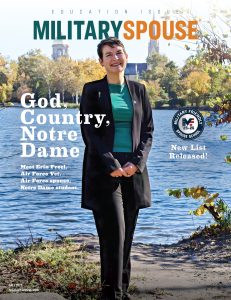Deployments are a hardship that military families endure on a regular basis. If you belong to a military family, whether you are the member, spouse, child, parent, or a sibling, you either have experienced, or will experience a deployment.
Chances are that you will not always have the support of your family nearby when they happen – and if you do, you are very lucky.
The military has recognized the need for military families to feel supported and connected during deployments. This is why four of the military branches have what is known as Family Readiness Systems, or Groups (FRGs). Also, known as Soldier Family Readiness Groups (SFRGs) in the Army and Work-Life programs in the Coast Guard, these groups were formed to help families feel supported and get connected during their loved one’s time with a unit or squadron, and especially during a deployment. Immediate and extended family members – parents, aunts, uncles, siblings, even unmarried partners of the member – are welcome to join, usually free of charge. FRGs offer multiple ways for family members of a unit to get involved and form connections with other families in the unit. All of the members of the board are volunteers, usually more seasoned spouses, who know the lay of the land and can assist in helping families navigate all things military life. They are not without their downfalls – there can be inconsistencies in communication or “drama” like any other group.
The Air Force’s approach to family readiness and support is the Key Spouse Program. According to the AFPC’s official website, “The U.S. Air Force Key Spouse Program (KSP) is an official Air Force Unit Family Readiness Program designed to enhance readiness, personal/family resiliency and establish a sense of Air Force community. Key Spouses are commander-appointed and serve as a vital resource to command teams in an effort to support Air Force families.” The Key Spouse’s main goal is to disseminate information from command teams to spouses, and to assist spouses and families in times of great need by connecting them with leadership and/or resources that can help them.
Despite the promises set forth by the program, there are several areas where the KSP falls short. Unlike Family Readiness Groups, the Key Spouse program does not function as a group where other families are actively involved, making it harder to form connections with other families in the unit. The Key Spouse also does not disseminate information to other immediate family members or to unmarried partners of the active duty member, regardless of their living situation.
Different commands also have different expectations of the program. Some commands have an active group of key spouses who take initiative and are regularly in contact with families; others have many families who don’t even know who their key spouse is or how to get in contact. I have personally met new families who had no idea what a key spouse was, or that any support was provided during deployment. There are also commands who have trouble finding spouses to fill the role of key spouse, and it can be this type of inconsistency is a blow to military families who need support, especially during deployments.
One argument that can be made against adopting the FRG-style model is that the Air Force has Spouses’ clubs. While Spouses’ clubs are a great way for spouses to get involved and start volunteering within their community, they generally do not provide sufficient support to deployed family members. What’s more, their focus is community and installation-wide, whereas FRGs focus on the families within their units or squadrons. Another caveat to Spouses’ clubs is that they have monthly or yearly fees for membership, which can alienate new spouses who cannot afford to join.
Here are five key reasons that the Air Force should adopt an FRG-style model:
Better communication. Family Readiness Groups are in constant contact with their families, whether it be through email, text, phone, or social media. If one person doesn’t know the answer to a question, another will.
Free (or low cost) to join. Cost can be a deciding factor in any kind of activity for military families. Fortunately, many FRGs find other ways to cover their operating costs – such as fundraisers – that make it to where families aren’t footing the bill. Families shouldn’t have to pay to be supported!
Easier to get connected and involved. One of the greatest challenges at any new Air Force base for spouses is being able to connect with other spouses. Some bases are more community oriented; others tend to be more isolating and clique-y. If you don’t have awesome neighbors willing to make friends at a new base, it can be very hard for spouses to meet people – even on social media. An FRG would give spouses a way to get connected with other spouses in the member’s unit that they can reach out to and possibly have a support system.
Inclusion. In some cases, FRGs allow family members other than spouses to participate. Unmarried partners, parents, brothers, sisters, grandparents, etc. can sometimes participate in an FRG and all of it’s activities.
Provides extra support to the Key Spouse. Key spouses and FRGs work together to help families feel supported and enhance readiness during a deployment. Where a Key Spouse can relay information from leadership about the “business” side of things, the FRG is intended to support families practically and emotionally.
There is much the Air Force can do to improve how deployed families are supported. “We don’t have to wait for the DOD to ask us [about how to fix spouse groups]. Let’s tell them,” said Jennifer Barnhill in a recent article on this topic, “because at the end of the day connecting families to each other and available resources is what we all want.” Supporting the needs of a military family during deployment is essential to the mission. When a military member knows that their family is taken care of, they are able to focus on the mission, and everyone wins.




